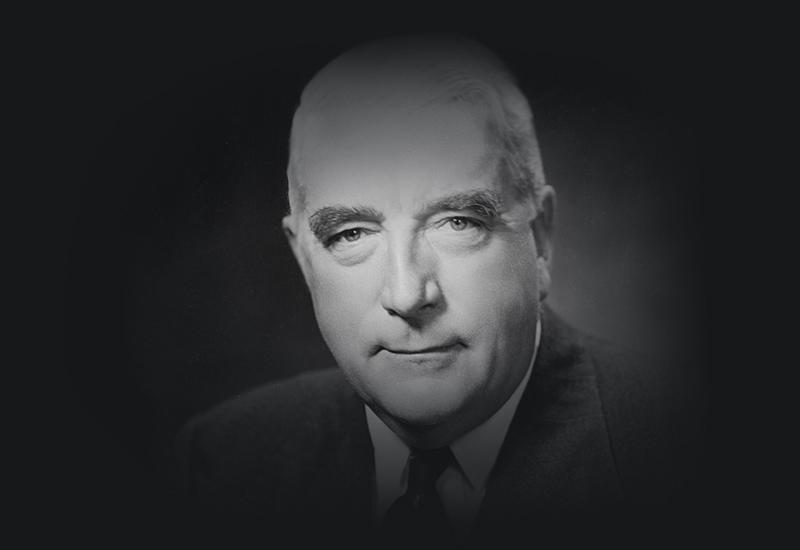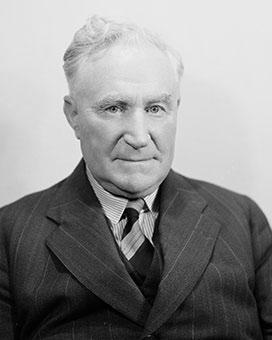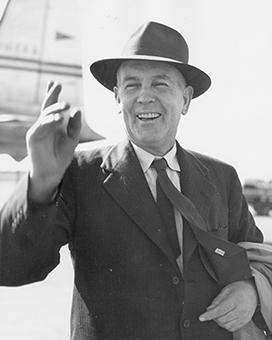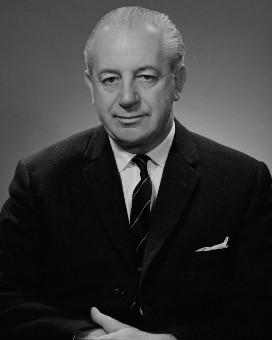Robert Gordon Menzies retired as Prime Minister on 20 January 1966. At 71 years of age, he planned to withdraw from politics and devote his time to writing, reading and travel.
In 1965, a group of Menzies’ supporters and friends, aware that after years of public service he was not a wealthy man, had clubbed together to buy a suitable home for his use on retirement. Menzies had at first resisted, but had agreed to the plan when it was decided to sell the home after his death and donate the proceeds to charity.
In July 1966, Menzies travelled to Britain, for the ceremony of installing him as Constable of Dover Castle and Warden of the Cinque Ports. Henceforth, Walmer Castle in Kent, official residence of the Warden, was the Menzies’ home during their annual visits to Britain.
At the end of 1966, Menzies took up a scholar-in-residence position at the University of Virginia. He presented a series of lectures on the growth of power of the federal government in Australia. Menzies’ connection with university life continued in a different form after his return from the United States. He was elected Chancellor of Melbourne University, serving a 3-year term.
Menzies devoted much of the early years of his retirement to writing. Afternoon Light, his first volume of memoirs appeared in 1967. The University of Virginia lectures were published under the title Central Power in the Australian Commonwealth in 1968. And an autobiographical account of his 2 prime ministerships, Measure of the Years, appeared in 1970.
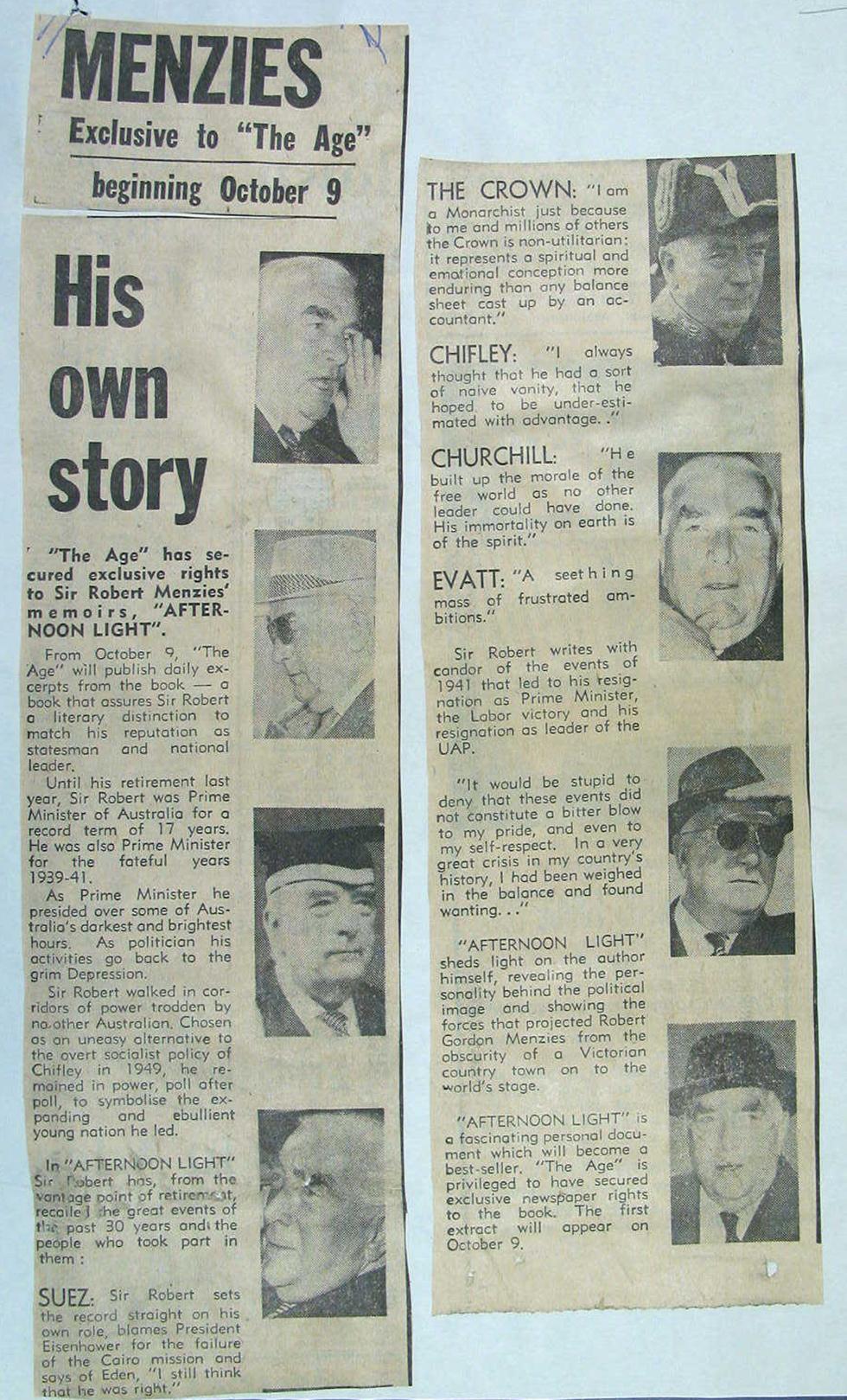
In 1967, Robert Menzies published his first book of memoirs entitled Afternoon Light. NAA: A5954, 67/8, p.22
He also indulged his life-long passion for watching sport. His fondness for cricket is well known – when in Britain in the summer of 1956 he had a television installed in the Daimler car lent to him by the British government, so he could watch the Australia–England Test matches while travelling. What is not so well known was his enthusiasm for Australian football and his support for the Carlton Football Club. In his final lecture at the University of Virginia, he showed his bemused American students a film of the 1966 Football Grand Final at the Melbourne Cricket Ground.
While in London in September 1968, Menzies suffered a mild stroke, and in November 1971 a more severe stroke left him completely paralysed on one side. Despite extensive physiotherapy and treatment, he never regained full mobility and became reliant on a wheelchair outside of his home.
He still attended football games. The Carlton Football Club made special arrangements, first so his car could be driven close to the goalposts at the northern end of the ground. Later the Club provided a special wheelchair so their eminent fan could be carried up into the stand. In April 1973, Menzies participated in the unfurling of the 1972 premiership flag at the club. His enthusiasm for cricket waned somewhat. The increasingly boisterous cricket crowds – ‘more in keeping with a football crowd’, he wrote his friend John Bunting – spoiled his enjoyment.
In March 1977, at the centenary cricket test in Melbourne, Menzies received his last honour from the Queen. In the Long Room at the Melbourne Cricket Ground, he was invested into the Knight Division of the Order of Australia (AK), awarded the previous year when the new Division was instituted by the government of Malcolm Fraser.
On 15 May 1978, while reading in his study, Menzies suffered a heart attack and died. A state funeral was held on 19 May 1978. Australia’s leading politicians, representatives of overseas governments and Prince Charles, representing the Queen, attended the service at Scots Church in Melbourne. There they heard Menzies’ old friend, the Reverend Fred McKay, speak of the private Menzies, the family man and friend. Over 100,000 people lined the route from Melbourne to Springvale crematorium. There, in a service attended only by the Menzies family, his body was committed for cremation. A 19-gun salute was fired at the end of the ceremony. In July 1978, Britain paid homage to Menzies with a memorial service in Westminster Abbey.
Sources
- Martin, AW, Robert Menzies: A Life. Volume 2, 1944–1978, Melbourne University Press, Carlton, VIC, 1999.
- Menzies, Robert, The Measure of the Years: Prime Minister of Australia, 1939–41 and 1949–66, Cassell, London, 1970.
From the National Archives of Australia collection
- Condolence messages received on the death of Sir Robert Menzies, 1978, NAA: A9257

